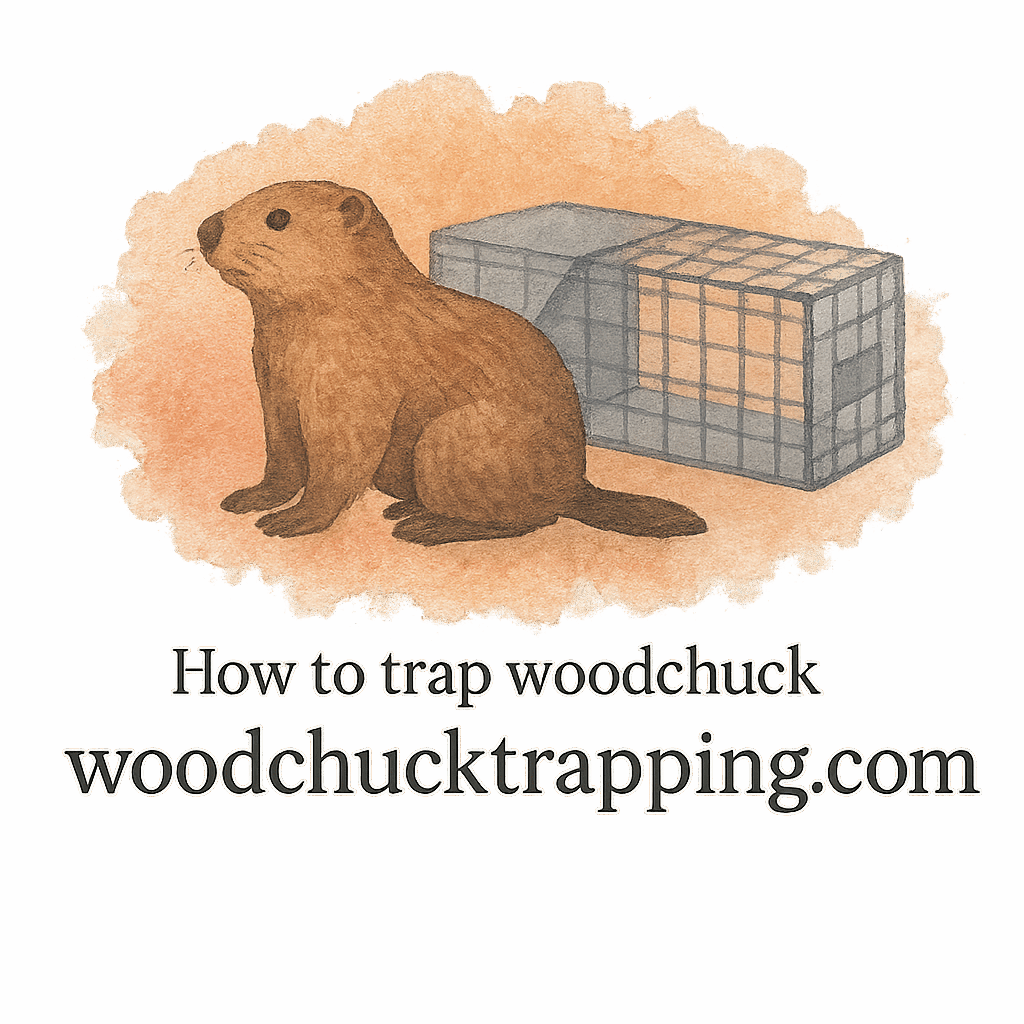Got a woodchuck problem in your yard? Before you grab a trap and head out, there’s one crucial thing you might be missing—permits. That’s right! Trapping woodchucks isn’t as simple as tossing out a cage and waiting for nature to take its course. From state licenses to relocation rules, there are legal hoops to jump through.
Let’s break it down step by step so you stay out of trouble—and keep those woodchucks out of your garden.
Understanding the Legal Side of Woodchuck Trapping
Why Permits Matter in Wildlife Control
Ever heard the saying, “Better safe than sorry”? That’s especially true when dealing with local wildlife. Most states classify woodchucks as nuisance animals, but that doesn’t mean you can trap them however you want. Trapping without the right permits can lead to fines, confiscation of equipment, or even legal charges.
How Laws Vary by State and County
The tricky part? There’s no one-size-fits-all rule. Laws around woodchuck trapping vary wildly based on where you live. Some counties allow trapping year-round with minimal paperwork, while others require multiple permits and adherence to humane trapping practices.
Check out this page for more info on laws and safety in your area.
Permit #1: General Trapping License
What It Covers and When You Need It
This is the most basic license for anyone trapping wild animals. In many places, you can’t legally trap any wildlife—including woodchucks—without this foundational permit.
It typically allows you to use specific types of traps and outlines trapping seasons.
Where to Obtain This License
Head over to your state’s wildlife agency website. Some even allow you to apply online or through approved vendors like sporting goods stores.
Don’t forget to pair your license with the right equipment like gloves, trap gear, and scent masking tools!
Permit #2: Nuisance Wildlife Permit
For Property Protection and Damage Control
This one’s especially useful if woodchucks are wreaking havoc on your property. Got yard damage or burrows undermining your garden shed? This permit lets you trap specifically for nuisance control.
Related Regulations and Limitations
You’ll likely need to provide evidence—photos or a site inspection—to prove the damage. This permit might limit trap types or require humane handling methods.
More info on damage control is available on our prevention and damage page.
Permit #3: Special Use Permit for Protected Areas
Required When Trapping Near Parks or Reserves
Planning to trap near conservation land, state parks, or waterways? You’ll need a special use permit. These areas are sensitive, and extra rules apply to protect native species.
Why This Is Essential in Urban Areas
Urban zones with shared green spaces often require strict regulations to avoid accidentally harming protected species or violating city ordinances.

Permit #4: Relocation Permit
When You Plan to Release the Animal Elsewhere
You can’t just drive a trapped woodchuck to the next county and set it free—at least, not legally in most places. If relocation is your goal, you’ll need a relocation permit.
Humane Trapping and Relocation Guidelines
This ensures the animal is released in a suitable, safe habitat without causing environmental disruption. Be sure to use humane traps and follow best practices from the trapping techniques guide.
Permit #5: Commercial Trapping Permit
For Professional Pest Controllers
If you’re a licensed wildlife removal expert, or hiring one, this permit is often required. It allows for broader use of traps and includes insurance requirements.
Rules for Businesses or Contractors
Businesses must keep logs of captured and relocated animals, follow humane procedures, and ensure staff use safety gear like gloves and scent-masking sprays.
Permit #6: Seasonal Permit
Only Allowed During Certain Months
Some regions limit woodchuck trapping to specific times of the year to avoid disrupting mating seasons or migration cycles.
Avoiding Fines and Wildlife Conflicts
Trapping out of season—even with a general license—could land you in hot water. Always double-check seasonal restrictions.
Permit #7: Equipment Use Permit
For Specific Trap Types or Devices
Certain traps—especially those using mechanical, chemical, or advanced triggering systems—require their own permits. This includes compact traps used in minimal space like small yards or patios.
Compact Traps and Humane Equipment
Using the wrong gear can be considered inhumane or unsafe. Browse equipment reviews for trap options approved in your area.
Permit #8: Landowner Consent Documentation
When Trapping on Someone Else’s Property
This isn’t technically a state permit, but it’s often required. If you plan to trap on land you don’t own—say, a neighbor’s overrun shed—you’ll need written consent.
Legal Proof to Avoid Disputes
Without it, you’re risking trespassing charges. Keep a signed document on hand—better safe than dealing with a legal mess.
How to Apply for These Permits
Step-by-Step Guide for Your State
- Visit your state wildlife or environmental agency site.
- Search for “nuisance wildlife” or “trapping license.”
- Create an account if needed.
- Submit ID, proof of address, and reasons for trapping.
- Pay any associated fees.
What You’ll Need for Approval
- Property description
- Type of trap
- Intended outcome (removal vs. relocation)
- Safety and humane use plan
Common Mistakes When Trapping Without Permits
Fines, Confiscations, and Legal Trouble
Getting caught without the right documentation can result in:
- Hefty fines
- Confiscated traps
- Potential criminal charges
- Permanent license bans
Learn from others—read stories of failed attempts due to missing paperwork.
Stay Safe and Legal with Proper Documentation
Best Practices for Humane and Responsible Trapping
Always:
- Check traps frequently
- Use approved trap scents and lures
- Avoid leaving animals overnight
- Follow state relocation rules
- Respect animal welfare regulations
Explore more how-to trap guides to stay informed.
Conclusion
So there you have it—eight permits that could save you a heap of trouble when trapping woodchucks. Whether you’re dealing with an infestation or just trying to protect your tomatoes, don’t skip the legal steps. Trapping woodchucks the right way means doing it safely, humanely, and legally.
Make your next trapping effort not just successful, but responsible. For more on traps, scents, and handling tips, visit Woodchuck Trapping HQ.
FAQs
1. Do I need a permit to trap woodchucks on my own property?
Yes, in most states, even on private land, you’ll need at least a general trapping license or nuisance permit.
2. Can I relocate a trapped woodchuck without a permit?
Nope. Relocation often requires a specific permit to ensure environmental safety and legal compliance.
3. What’s the best trap for legal and humane woodchuck removal?
Check our equipment reviews for the best humane and compact traps suited for small yards.
4. Are there any trap scent rules I need to follow?
Yes. Certain trap scents or baits may be regulated, so make sure they comply with local wildlife laws.
5. Is a trapping license the same as a hunting license?
Not always. Some states issue them separately, so don’t assume your hunting license covers trapping.
6. Can a professional trapper handle this for me legally?
Absolutely—just ensure they have a valid commercial trapping permit.
7. What’s the easiest way to check my local permit requirements?
Head over to your state wildlife department website or explore our laws and safety guide.


